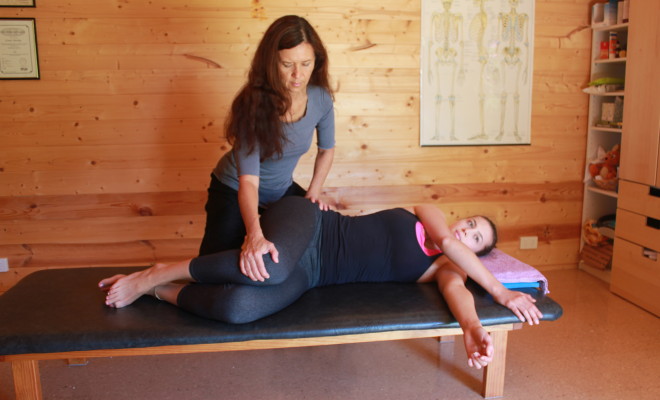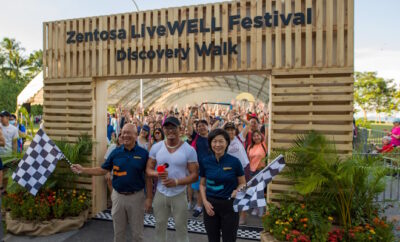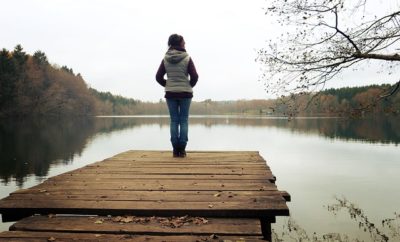
Health x Wellness
Linda Hardey and the Feldenkrais method
We interview 53 -year-old Linda Hardey (LH), a physiotherapist and practitioner of the Feldenkrais method, to share more about the method and how it can help active agers with pain and movement restrictions.
AA: Firstly, share with us about the Feldenkrais method – how did it originate?
LH: Well, the Feldenkrais method was developed by Moshe Feldenkrais, an Israeli physicist who was trained in mechanical and electrical engineering. He did a lot of research in nuclear physics and did martial arts as well. He also had a very bad knee injury but continued to play soccer which caused him to injure his other knee. It was then that he realised he could start using the knee he was previously unable to use before. He found that by stopping to think about his movement, he could actually start moving a lot better. To him, the medical world compartmentalises people’s bodies by looking at one part of the body before correcting the structure, and not looking at how the person actually uses themselves on a whole. He began his study as a personal quest to find out how to improve the way we use ourselves as a whole.
Feldenkrais was also under a lot of stress because he was a Jewish person living in France, and they were getting invaded by the Germans then. The stress from fleeing France had actually made his knees worse. So he looked at how the emotional state affects our physical health as well. It’s multi-faceted, and we can’t just look at one aspect – it’s the whole body, mind and emotion.
While working on himself, he slowly developed his method and flew to England where there was a lot of Polio going around. There were a lot of people limping and they developed all kinds of deformities because they were constantly dragging their legs around. He then started classes to teach people how to organise themselves – which is the basis of the Awareness Movement that I’m teaching here in Singapore. The classes were previously called “Exercises for Personal Health” before he called them the Feldenkrais method.
AA: When did you start practising the Feldenkrais method and what got you started on it?
LH: After I finished my physiotherapy degree in 1982, I worked at a hospital in Singapore for a while before migrating to Australia to work with handicapped children. However, I wasn’t totally satisfied with what I was doing and felt that something was amiss. So I got curious and found this Feldenkrais method study group organised at the university where I studied. There were other study groups all around Australia and they brought in a Feldenkrais trainer, who grew very famous and effective in his work and went to America to hold a big training programme there. He held two training programmes but couldn’t finish the second one and got his students in the first training programme to finish it. Those students in the first training programme eventually became my teachers.
A few of them came over from America to do some short four-day courses, and I was just so blown away and impressed by the different approach. When I worked with the handicapped people there, there was often pain involved and they’d feel anxiety – I didn’t feel this was right. But with the Feldenkrais method, you’re looking more at what the person needs to know to have a better life – like being able to sit properly again. It’s not what we must make them do, but what they need to understand about their own bodies. You’re really making sure they understand every step, and it’s very slow and thorough. The method was so effective when I learnt about it that I decided to take up the training programme. I actually injured my neck while working with the handicapped and the Feldenkrais method has helped me a lot personally – and that’s a bonus.
AA: One of the benefits of the method is that it can help people with pain or movement restrictions. Can you walk us through the process or method?
LH: When you have an injury or experience pain, you often tighten up in that area and try to protect it. One scenario is that the pain does subside or the cause of the pain subsides, but you’ve adopted a habit of tightening up in that area. It will constantly irritate in that area because of the way you’re moving.
With the Feldenkrais method, you first look at how you’re moving. A lot of times if no one tells you to pay attention to how you move, you take it for granted because you’re so used to doing that movement and you don’t focus on yourself enough. The method takes you through the process of being aware that you’re tightening up in a certain area when you do certain things, and shifts your focus away from that memory of pain. You learn to think about how you are sitting, or whether you’re holding your shoulder too tight and just focus on your posture at a much deeper level. Instead of getting to a level where there’s pain, you learn to just let it go before tensing up in that area. Being more sensitive to yourself and the organisation of your body allows you to pay attention to the subtle things in your movement and helps you break out of that pattern eventually.
In a general class, you will be taken through a sequence of slow meditative movements where you attend to your breathing so that you can really pay attention to yourself at many levels, and not just what you’re doing with your movement. The class may also feature a particular movement organisation, where we’ll slowly unravel that whole movement to allow you to feel where you’re locking, or how something connects, or why you can’t do a certain movement. It’s about making the unconscious more conscious. When you move more efficiently, you strain yourself less and the chances of pain arising lessens too.
AA: What sort of movements or exercises do you focus on in a typical Feldenkrais workshop?
LH: I just did a couple of workshops – the first one was on the organisation of the pelvis. While it focuses on one region, the pelvis is connected to your other body parts as well. You’ll learn how your feet, legs and hips are also involved just by doing the movements. The class will also teach you how the movement of your pelvis affects the posture of your neck and your head.
Other types of classes focus on a particular movement organisation like for instance, from sitting to standing, and you’ll be taken through it in a more efficient way. The class will shift your attention away from the structure and into the pure movement.
Not thinking about the pain all the time is beneficial because the pain can make you very anxious – which in turn stimulates more pain and makes things worse. Ask yourself if you’re tensing up your shoulder, see how you’re recreating the pain and learn how to stop doing it and just let it go. Then integrate this into your whole movement so you can protect it. When you tell yourself to just let go of the pain, your circulation returns to that area and with your body’s natural healing, you’ll feel more relaxed as a result.
AA: How is the Feldenkrais method different from Yoga, for instance?
LH: Yoga is more structured and often you’re watching and copying the teacher so the attention is external and can be very goal-directed. Although you’re paying attention to your breathing, often you’re paying attention to the end result and not to the process that’s taking you to that posture.
With Feldenkrais, the class has a broader application because it can benefit both a fit person as well as someone who’s in a lot of pain. Because you’re really focusing on your own comfort first, you become more in touch with your brain’s problem-solving areas. There’s more thinking and analysing involved with Feldenkrais because you’re moving in a way that suits you – and it’s very personal. You’re being verbally directed throughout the class so you’re not watching anyone but attending completely to yourself. The teacher does not do any of the moves, and only gives verbal instructions. Even if I see someone working very hard during the class, I won’t point it out to them because it is about learning not to be judgemental towards yourself. Everybody has their own way of moving and there’s a reason why they’re moving in a certain way. When you start to think that “Oh, this is wrong”, you become anxious. Whereas when you start to think, “Oh, this is what I’m doing it, why am I doing this?” – the curiosity is there. It encourages you to explore your own movement and I think that’s the difference.
With yoga you’re following an ideal movement. With Feldenkrais, you’re very much finding your own way through a movement that suits you at the present. And maybe in one month’s time, that movement might be different because you’re not so tight anymore. You can keep changing your own movement and develop it into your own style.
AA: I understand that you have worked with many teenagers with sports injuries. Do you have active agers coming to you for help with managing pain and movement restrictions as well?
LH: I do.
I’ve been running two classes back in Perth for about 20 years now. I have groups who come and go but majority of the people in my classes have been my private clients. Usually active agers come to me because their hips are very sore, they can’t climb the steps, or they’re limping… So I’ll look at their organisation, tell them what they’re holding too tight, and see how they’re pushing it. It’s a very, very gentle process where they slowly unravel the change in their pattern, and make their movement clearer and easier. I’d like to refer them to the Feldenkrais classes because they are self-directed. While listening to my instructions, they’re also learning a lot more because they’re doing it all by themselves.
So yes, even elderly people – one lady couldn’t walk, said that her hip was always crooked but after she went for the classes her grandson said “You’re walking straighter now!” And they love it because they can feel good every time they stand up and they feel freer. And some of the classes are quite challenging – some of them are practically doing the judo roll and they’re 82-year-olds. They do feel very proud of themselves. Some of them might get to that point, while some of them don’t. But there’s no pressure whatsoever to get to that point. It’s really about doing whatever feels safe because sometimes they push themselves too far and get injured.
Though many of them are skeptical about the Feldenkrais method because they haven’t really heard about it, the people I see are usually desperate, because they’ve tried everything else but nothing has helped in the long term.
Common areas of pain among the older clients would be the neck, shoulders and lower back. Often people are working too hard, and everything is tightening up and the body can’t work efficiently. So I have to teach them how to create a balance by letting go of one muscle to use another. Even for the eye, people don’t think they have eye muscles but they are actually very functionally connected to your neck muscles. So again, I teach people how to move freely, how not to lock the way they use their eyes with the neck… Nearly everything can be cured.
AA: How would the Feldenkrais method benefit an active ager?
LH: With ageing people, one thing you want to do is to keep your flexibility and your strength. Feldenkrais basically makes you move more efficiently, reduces the tension, and brings you back to a more efficient structure so you’re not straining every part. It can take just three sessions to make a huge change in habitual movements. After a series of lessons, people also find themselves reducing their intake of medications (such as anti-inflammatory medication or painkillers) by half to three quarters within two to three weeks.
Flexibility is a very big thing. Some people think flexibility is just about stretching the joints here and there but flexibility is about the whole organisation. To lift your leg, you also have to release your spine. Injuries and falls can be prevented when balance is improved, while awareness helps with balance. Generally when you’re more aware of yourself, you’ll have a better quality of life. It’s all integrated – the mind, stress relief… Almost everybody would tell me that after they come for the classes, they’d get the best sleep at night.
AA: What are your plans to build a community or following for the Feldenkrais method in Singapore?
LH: Because I was originally from Singapore and was working in a hospital here, it’s a bit of a personal thing of wanting to bring it back to where I came from. I think Singaporeans can really benefit so much from it.
At the moment, I’m just running small workshops at COMO Shambhala and will probably come back two or three times a year to run these workshops. There was this lady at one of the workshops who’s bringing in another practitioner this December, and that means more people are starting to get into this and are taking more responsibility over their health and their well-being. I think there’s definitely opportunities to grow a community in Singapore soon.
While yoga and Pilates are more popular in Singapore, people can actually gain more from these classes if they learn the Feldenkrais method of paying attention to their bodies in a much more refined way. When you know how to use yourself better, you’ll do better at everything else you want to continue doing.
AA: Thank you for your time, Linda.
LH: It’s my pleasure.









